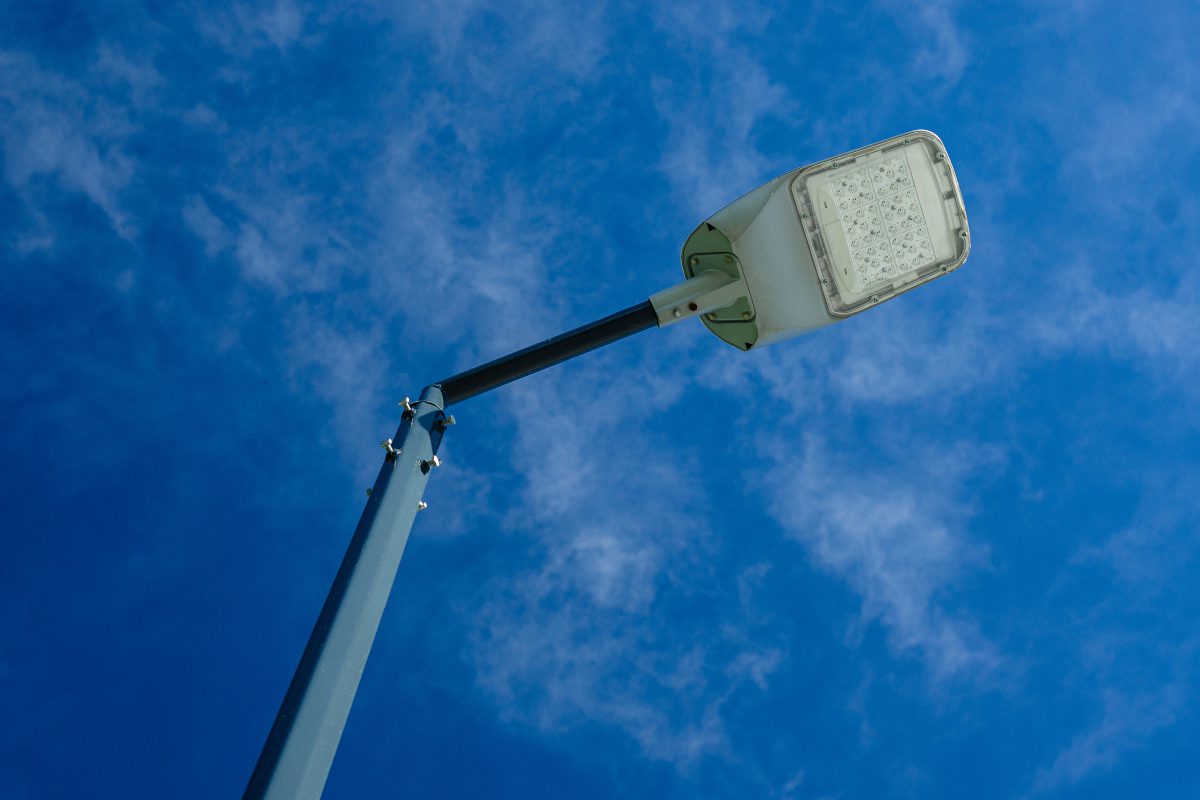
A new generation of smart lampposts that can read body temperatures and detect overcrowding could stop the spread of Covid-19 and regenerate cities, according to a new report.
These 21st century lamp columns go beyond street lighting by incorporating sensors that can receive and transmit information about crowd density, and even the body temperature of individuals. They can also incorporate CCTV, air quality sensors, flooding monitors, digital signage, and 5G wifi hotspots.
The report, “Shining a Global Light” – commissioned by tech firms and smart cities stakeholders UrbanDNA, Hydro, Itron, Lucy Zodion, Signify and the Smart City Infrastructure Fund – draws on case experiences from Barcelona, Copenhagen, LA, London, Munich and Singapore, to demonstrate how smart lampposts are being used to tackle the coronavirus pandemic.
In Barcelona, the City Council has developed a camera-based solution attached to lampposts in the Las Ramblas area to ensure public health on beaches and implement crowd control measures to help tackle Covid.
Marc Perez-Batlle, innovation manager at Municipal Institute of Information and Technology at Barcelona City Council, said: “We used scanning devices to get the images and a bit of artificial intelligence to analyse them to find out what portion of the beach was free in terms of lack of people. We analysed the proportion of sand rather than identifying people’s faces. This enabled us to look at the capacity that was free. Due to privacy concerns we anonymised the images.”
Westminster City Council in London is looking at ways of using lighting to nudge people away from potentially crowded tube exits around Oxford Street to help with crowd safety management.
A street lighting London expert said: “It’s simply about putting lights on the ground to either make people stand there or make people avoid it. This helps with crowd control when you are coming out of the train and out of tube stops to help curtail people mingling around exits.”
Los Angeles already has more than 400 smart street lights, equipped with electronic vehicle chargers, and the city is looking to pilot air quality sensors, fire spotters, gunshot locators and earthquake sensors. Although LA is not yet using smart lampposts to tackle Covid, its street lighting department maintains that smart lampposts could help them to detect if someone has a high temperature.
James Quigley, Senior Engineering Manager, at Bureau of Street Lighting (BSL) Los Angeles, said: “Are people congregating where they shouldn’t be and how many of these people are exhibiting symptoms? A temperature sensor that is mounted on a lamppost is something that could be easily done. If your temperature is above 100 you can flag it up.”
Globally, there are 326 million street lights. A quarter of these have been converted to run on energy saving LEDs, with more than 10 million lamp columns already set up as smart lampposts.
A street light column, by definition, has electricity running to it, which can power additional sensors, mounted alongside the lamp. Street lights naturally follow where people and businesses are, and therefore are ideally placed where gathering sensor data is most useful to the provision of ‘Smart Applications’.
As a press release from the authors puts it: “After more than a year of restrictions, coronavirus is still thriving as many countries try to tackle their third and fourth waves. Lockdowns have cost Europe €2 billion per day[1], equivalent to the cost of investing in 2 million smart lampposts every day.”
Richard Perry, Lucy Zodion’s Smart Cities Head of Business Development, said: “The pandemic has been highly revealing regarding smart city infrastructure, and the need to improve our way of working to drive further efficiencies. The key takeaway from the report is the amount of untapped potential that exists. We have seen forward-thinking cities such as London, Barcelona, and Copenhagen leading the way, and individually they are only accessing a small proportion of what the ‘humble lamppost’ can offer. Imagine the potential for other cities. With this new alliance, we are learning all the time and discovering new initiatives in which the lamppost can play a role in our recovery.
“We don’t know when we will be finally Covid-free, but as we slowly ease restrictions, new measures will be needed to keep everyone and the economy safe. By using their existing infrastructure, local authorities can smarten their lighting assets making their public spaces safer, healthier and bag the bankable financial savings that result from smart lighting upgrades – which typically exceed 50%.”
Graham Colclough, founding partner of UrbanDNA, said: “The paper highlights the progressive cities that are leading the way in using smart technologies to tackle Covid. It highlights a second group that have implemented the technology. However, they have not yet fully exploited its potential to address Covid recovery. The real opportunity lies with the third larger group that can reap huge energy and cost savings from installing LED smart lights, and benefit at the same time by making those lights ‘smart’ to address Covid-related needs. Our report shows how they can do so to best effect.”
You can access the report here.







